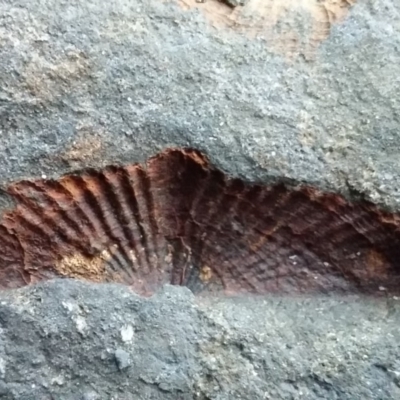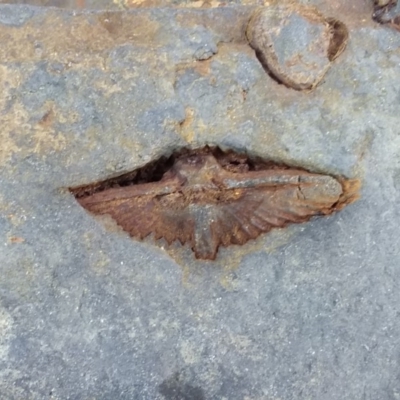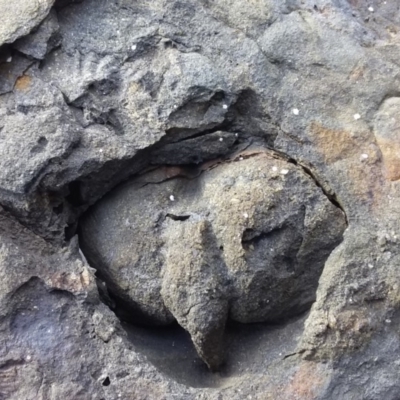Brachiopoda Spiriferida (Spiriferid Brachiopod)
Brachiopods have one of the longest histories and best fossil records of all invertebrates. They lived in the mud or were attached to the sea floor, filter-feeding on organic particles carried by ocean currents. Their fossils are mostly found in muddy sediments, such as the Wandrawandian Siltstone around Ulladulla Harbour.
Most Brachiopods, including Spiriferids and Rhynchonellids, attached to the sea floor with a fleshy stalk that protruded through a hole at the shells’ hinge. Others, such as Productids, used spines protruding from their shells to stabilize themselves in the mud. Although Brachiopod shells exhibit a wide variety of shapes they all have different dorsal and ventral valves, symmetrical about the centreline of the valve.
Most species of Brachiopods disappeared near the end of the Permian Period. Around 30,000 species are known in the fossil record but only about 400 species survive today.







